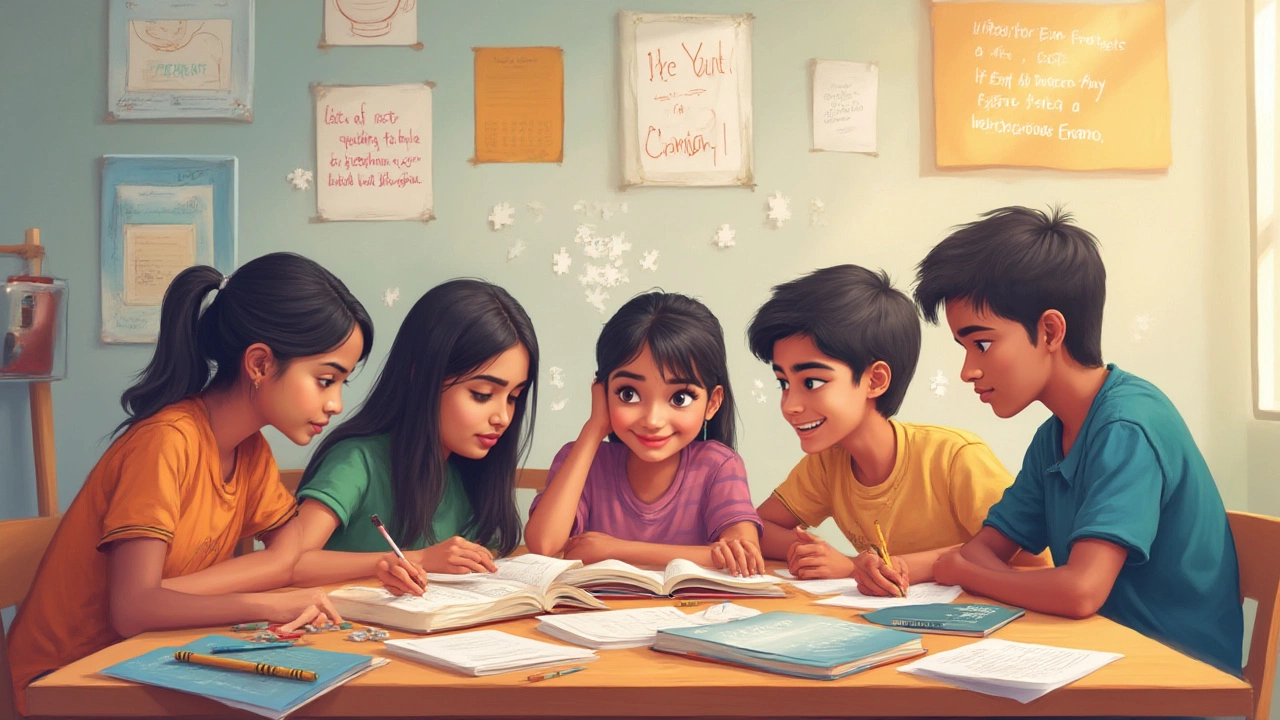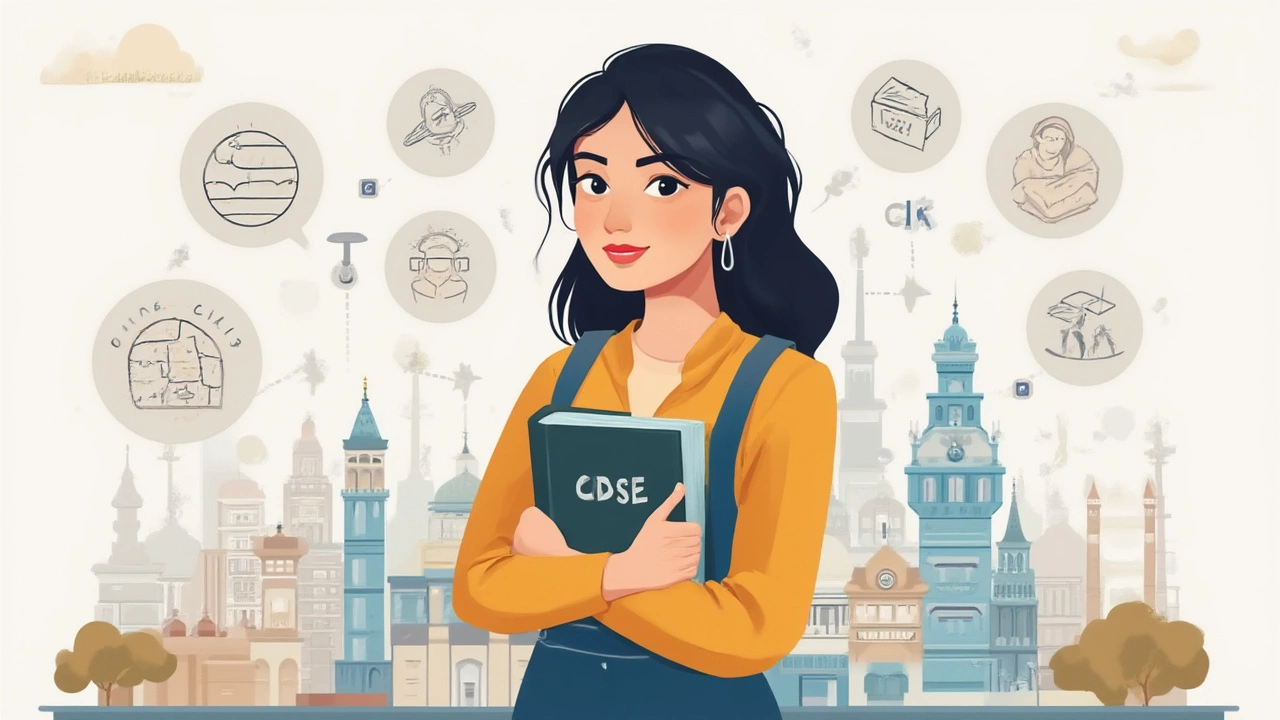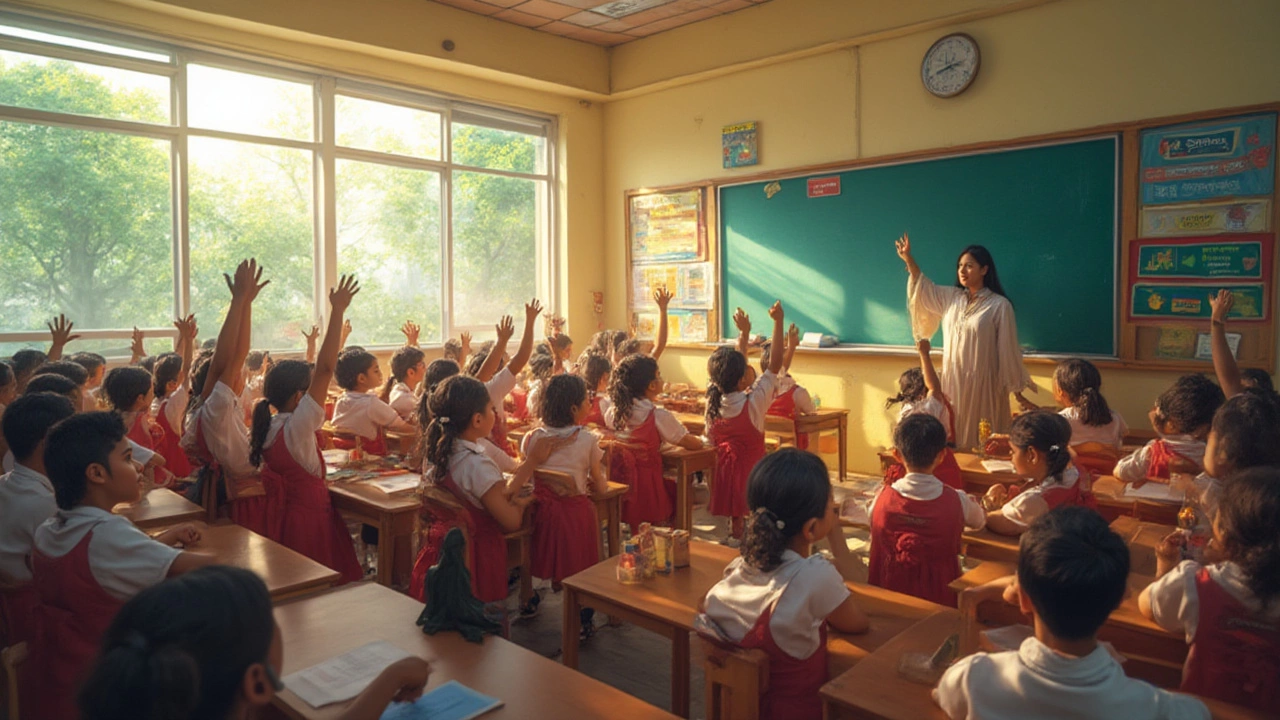Picture a classroom with kids scribbling away, teachers guiding them toward cracked board exams, and textbooks that don’t just push rote learning but focus on concepts. That’s the CBSE for you—the Central Board of Secondary Education. It’s the most talked-about school curriculum in India, shaping everything from report cards to dreams of top colleges. What’s in the syllabus? Why is everyone so obsessed with it? And is it really as vast (and tough) as the rumors say?
Understanding the CBSE Syllabus: What Makes It Unique?
The first thing that sets the CBSE syllabus apart is its nationwide reach. This isn’t just any school board—more than 27,000 schools in India and over 240 abroad use CBSE. With that scale comes serious responsibility. The syllabus is designed not just to check boxes for exams, but to actually teach kids how to think, solve problems, and apply ideas in real life.
Unlike a local state board, CBSE’s syllabus goes through regular checks—every few years, the board revises topics, adds new ones, and chucks what’s outdated. For example, coding was added recently in classes 6-8, and Artificial Intelligence in senior grades, reflecting trends in technology. There’s also National Education Policy (NEP) 2020 nudging changes: less emphasis on rote, more on critical thinking. It means students aren’t just forced to memorize centuries-old facts–they’re learning skills that’ll stick beyond school walls.
CBSE builds its syllabus around the National Curriculum Framework—a sort of master plan set by the NCERT. You’ll find the same books—often those yellow-bound NCERT textbooks—in almost every CBSE classroom, whether it’s in Lucknow or Dubai. This uniformity actually helps kids whose families move between cities (or countries), and it ensures everyone gets the same quality of education. No wild differences from one region to another.
What’s even more unique? The focus on internal assessment and projects, especially in classes 9-12. Students don’t just get marked for end-of-year exams; there’s a mix of practicals, presentations, and even field visits woven into the curriculum. It’s not just pen-and-paper testing anymore.
How Is the CBSE Syllabus Structured? Class-Wise Breakdown
Let’s break it down, one grade band at a time, because the syllabus shape-shifts as students move up the classes.
Primary Years (Classes 1-5): Here, the focus is on laying a strong base in language, math, and basic environment studies. No heavy textbooks or scary exams—kids are encouraged to explore, ask questions, and play while learning. CBSE recently pushed for lighter bags and less homework for these classes after studies flagged the problem of stress in younger children.
Middle School (Classes 6-8): At this stage, new subjects pop up—Science splits into Physics, Chemistry, and Biology, Social Science parts into History, Geography, Civics, and Economics. Languages usually include English, Hindi, and sometimes a third language (regional or foreign). Mathematics slips towards algebra and geometry. Coding and Artificial Intelligence are available as electives from Class 6 onwards, which is actually pretty advanced and unique for a school syllabus.
Secondary (Classes 9-10): These are the build-up years for board exams. The syllabus is more focused, with detailed NCERT textbooks for each subject. The number of subjects includes: English, Hindi/other language, Mathematics, Science, Social Science, one vocational subject, and sometimes an arts or health education component. Boards happen at the end of Class 10 (also called the Secondary School Examination or AISSE), which is a big deal for students and parents alike.
Senior Secondary (Classes 11-12): Here’s where things get really specialized. Students pick streams: Science (with options like Physics, Chemistry, Biology, Maths, Computer Science), Commerce (Accountancy, Business Studies, Economics, Maths), or Humanities (History, Geography, Political Science, Sociology, Psychology, etc.). Flexibility has grown—now students can mix subjects to some extent, thanks to NEP 2020 reforms. The end of Class 12 brings another round of boards (AISSCE), which basically decide college and career choices.
Want a quick look at the main CBSE subjects across streams? Here’s a handy table:
| Class | Common Subjects | Specialized/Elective Subjects |
|---|---|---|
| 1-5 | English, Hindi, Maths, EVS | Art, Computer Basics |
| 6-8 | English, Hindi, Maths, Science, Social Science | Third Language, IT, AI |
| 9-10 | English, Maths, Science, Social Science, Hindi | Vocational Subjects, Arts Ed. |
| 11-12 (Science) | English, Physics, Chemistry | Maths, Biology, CS, AI, PE |
| 11-12 (Commerce) | English, Accountancy, Business Studies, Economics | Maths, PE, IT, Entrepreneurship |
| 11-12 (Humanities) | English, Political Science, History, Geography | Psychology, Economics, Fine Arts, Sociology |

How Subjects and Exams Work: Weird Rules, Grading, and Projects
The CBSE doesn’t just list out subjects and leave kids to sink or swim. They’ve got a clear exam plan, marking rubrics, and weird (sometimes funny) rules that only make sense after you’ve lived through them. For instance: schools can teach a third language until class 8, but it doesn’t show up on the board report cards. Projects and practicals are compulsory in sciences, social sciences, IT, and even art. If you skip these, you don’t qualify for the final exam.
For classes 9-12, each subject often has two main components: theory (written papers, usually 80 marks) and practical/project/internal assessment (20 marks). In science subjects, lab work isn’t optional—it’s a must. Commerce stream students make business case study presentations, humanities folks might create social science field reports or art portfolios.
Exams sure seem scary, but the grading is a bit more humane than in the past. It isn’t about chasing impossible 100s. The CBSE uses a nine-point grading scale in classes 9 and 10 (from A1 to E), so the pressure is less about the exact marks and more about broader performance. In 12th grade, there are still percentages, but internal assessments can boost those final numbers.
Certain quirky things—like "best of five" promotion rules and marks moderation for tougher boards—make the system at least a tiny bit student-friendly. And now, with NEP 2020 pushing for “competency-based” questions, plain mugging up isn’t working. Kids have to understand the subject, which actually makes life easier in college and beyond.
CBSE Syllabus vs State Boards: Is It Harder or Just Different?
Ask anyone who’s moved from a state board to CBSE (or vice versa), and you’ll hear big opinions. Is the CBSE *actually* tougher? Truth: the focus is just very different. State boards sometimes let kids cram facts for direct recall, while CBSE forces you to grasp concepts, solve new problems, and write longer, step-by-step answers. That goes for maths, science, even social science.
The upside? If you’re aiming for national-level entrance exams like JEE (engineering) or NEET (medical), the CBSE syllabus is almost a mirror for what you’ll face in those papers. Exams like CUET (for university admission) are also based mostly on the NCERT books that CBSE uses. It gives CBSE kids a real edge. On the flip side, students used to CBSE sometimes find state board language papers (like regional literature or poetry) a bit tricky because those are often more advanced or text-heavy.
Interestingly, a 2023 study by the National Institute of Educational Planning showed that about 65% of students getting into top Indian engineering or medical colleges in the last five years were from a CBSE background. Coincidence? Probably not. The syllabus is designed to create all-rounders, not just toppers on paper.
However, CBSE does have its critics. Some say the syllabus is too vast or theoretical, and not localized enough—for example, it might miss out on regional history or literature. Still, for millions of Indian students (and those in Indian schools abroad), it opens doors to colleges and jobs pretty much anywhere.

Tips and Tricks for Navigating the CBSE Syllabus
No one said the CBSE route was effortless, but it doesn’t have to feel like climbing Everest every exam season. Here’s what helps kids (and honestly, their stressed-out parents) do better:
- Stick to NCERT books first. They aren’t perfect, but for exams, the questions always come from these. Even entrance tests (JEE, NEET, CUET) stick closely to NCERT content.
- Make your own notes. Distill those chunky chapters into short, simple points. Mind maps, diagrams, and tables help too.
- Try solving last five years’ board exam papers. You’ll see what gets repeated, what examiners love, and what ‘types’ of questions need long, detailed answers.
- Group study actually works (sometimes), especially for tough subjects like Physics or Accountancy. Explain topics out loud—you remember more.
- The marking scheme is your friend. Learn how CBSE allots marks for steps and diagrams, not just final answers.
- Don’t skip projects and practicals. Those 20 marks may feel small, but they can tip your overall grade up by an entire bracket.
- Watch for sample papers and updates on the CBSE official website. The board posts pattern changes or sample questions every year.
- Balance. Always keep time for hobbies or downtime—burnout is real and doesn’t help your marks at all.
And if you ever feel overwhelmed? Even toppers have shaky days. The CBSE syllabus challenges you, sure, but it’s also a pretty solid prep for college life, jobs, and thinking for yourself in the real world. That’s why it’s still the go-to curriculum for more than 22 million students every single year.
